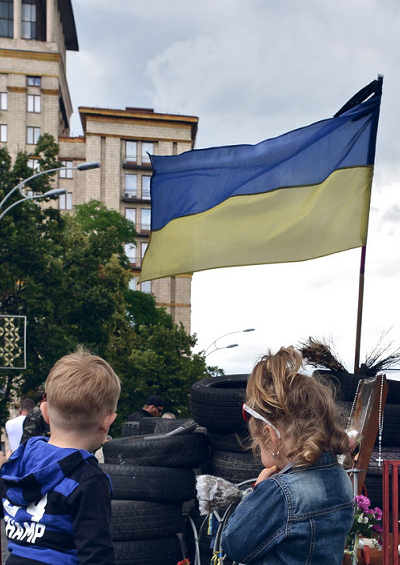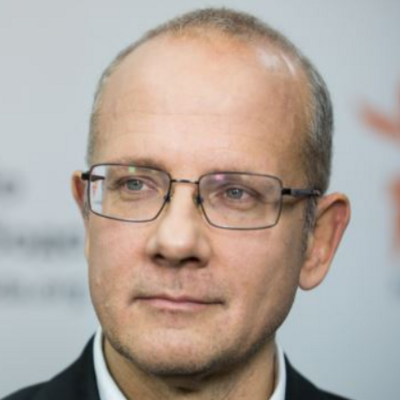Ukraine’s “Success Trap”
Within five to ten years, Ukraine will be a largely renewed country with less corruption and stronger rule of law than today. But Putin & Co. remain a big risk factor.
December 9, 2016

In contrast to much of the continuously negative reporting from Kyiv that appears in Western media, Ukraine’s political, social and economic reforms are actually moving slowly, yet steadily ahead.
- Among other new regulations and institutions, Ukraine has now set up several special agencies specifically dealing with the prevention, investigation and persecution of corruption.
- A new law on e-declarations of the possessions of state employees has led to revealing publications on the wealth of Ukrainian parliamentarians. This has triggered a hot debate in society about the nature of Ukraine’s political class.
- Both in the capital Kyiv and in Ukraine’s regions, a multitude of parallel reform initiatives driven by civic activists, patriotic entrepreneurs and reform-oriented officials are taking place – often with Western help.
The reason why many of these initiatives remain un- or underreported in foreign media has less to do with any bias against Ukraine than with the scarcity of Western expertise and journalism resources on the ground in Ukraine.
No longer just semi-criminal insider games
Above all, the general structure of political conflict in Ukraine has changed. Until 2014, domestic confrontations were fought primarily between competing oligarchic clans.
They used large-scale bribing of politicians and bureaucrats to get hold of the country’s natural resources, production facilities, real estate and tax money.
To be sure, these behind-the-scenes skirmishes are still taking place. Ukraine’s semi-criminal, para-political networks still exist.
A new political landscape has emerged
Yet, since the victory of the Euromaidan Revolution in 2014, the major conflict line in Ukrainian politics has shifted. It is no longer just the clans fighting one another over turf and fiefdoms.
Rather, the representatives of this full-quarter century old, de facto racketeering system now compete against an alliance of Ukraine’s civil society organizations that operate with the active political support of Western donor organizations.
Between these two domestic forces, a pitched battle is underway. One side continues to be focused on exploiting the Ukrainian economy, while the other side seeks to protect it and husband the resources it offers to the benefit of the public at large.
Is there any real hope now?
Make no mistake about it: Political infighting in Ukraine is as harsh as ever. Yet, it now thankfully often revolves around game-changing reform laws and the concurrent reconfiguration of the state apparatus.
While this struggle is difficult, long-winded and ugly, the wheel of history keeps turning.
The old system is still hanging on and trying to reinvent itself, but it has become sandwiched between a highly mobilized Third Sector and resolute international organizations, like the IMF and EU.
Working in tandem, they are jointly making sure that Ukraine’s transformation becomes deep and sustainable.
Transparency, finally
For instance, Ukraine’s old political class tried several times to modify or delay the new law on electronic income and assets declarations for state officials. Under combined pressure from civil society, journalists and the European Union, Ukraine’s parliament finally adopted the law.
After it went into force, it revealed useful information on Ukrainian parliamentarians and civil servants.
Within five to ten years, Ukraine will be a largely renewed country with less corruption than today. It will have a more or less functional public administration, a nascently decentralized administrative structure and a more efficient rule of law than today.
Ukraine will still not be Switzerland of course, but it still will have become markedly different from Ukraine’s neo-Soviet “brother nations” of Russia and Belarus.
There is a downside
Or will it? A fundamental handicap of the current Western-supported reform drive in Ukraine is that its gradual success may be triggering increasingly aggressive counter-reactions from Moscow.
That is because a more efficacious Ukrainian state is nothing less than an existential threat to the current power holders in Russia and Belarus, where people are interested in Ukrainian domestic affairs.
Ukraine is on the right way, but – as long as Russia and Belarus do not start implementing deep reforms themselves – it will reform itself on an increasingly risky path.
Putin, Lukashenko & Co. cannot afford to have next door a flowering Eastern Slavic future EU member state whose deep ties into Russian and Belarusian society will make the middle classes of their own unreformed countries’ envious.
Moscow and Minsk are key
Unless the regimes in Moscow and Minsk decide to re-invent themselves as pro-Western and reform-oriented, their stagnation will contrast more and more sharply with Ukraine’s transformation. They are liable to want to undermine the currently deepening changes in Ukraine.
That can, but does not necessarily mean that Moscow will start another large armed intervention into rump Ukraine.
Troops and other hybrid war tools
While directly military action in Ukraine remains a viable option, the Kremlin has also other instruments at its disposal.
A particularly obvious one is preserving a climate of insecurity and threat in eastern and southern Ukraine via troop movements, sabre rattling, support of secessionism etc. The purpose of these actions would be to scare away foreign investors, young Ukrainians and Western NGOs from these regions.
Keeping “Novorossiia,” i.e., those Ukrainian territories that many Russians regard as historically belonging to Russia, in a state of permanent suspense is perhaps Moscow’s most important tool to prevent a resurgence of the economy and stabilization of the state of Ukraine.
But there are other fields too where Russia can and is already active. They include trade restrictions, information war, political pressure, diplomatic trickery, cyber-attacks, intelligence activities etc.
The non-military tool-kit of “hybrid war” can be always buttressed by either open or para-military actions along the current conflict line in the Donetsk Basin, along the Russian-Ukrainian border, or at the Black Sea coast.
Takeaways
Political infighting in Ukraine is as harsh as ever. However, now it revolves around reform laws.
Within a few years, Ukraine will be a renewed country with less corruption than today.
Ukraine will still not be Switzerland but it will be different from its neo-Soviet “brother nations” of Russia and Belarus.
Ukraine’s Western-supported reform drive may be triggering counter-reactions from Moscow.
Apart from military action in Ukraine, the Kremlin also has other instruments at its disposal.
